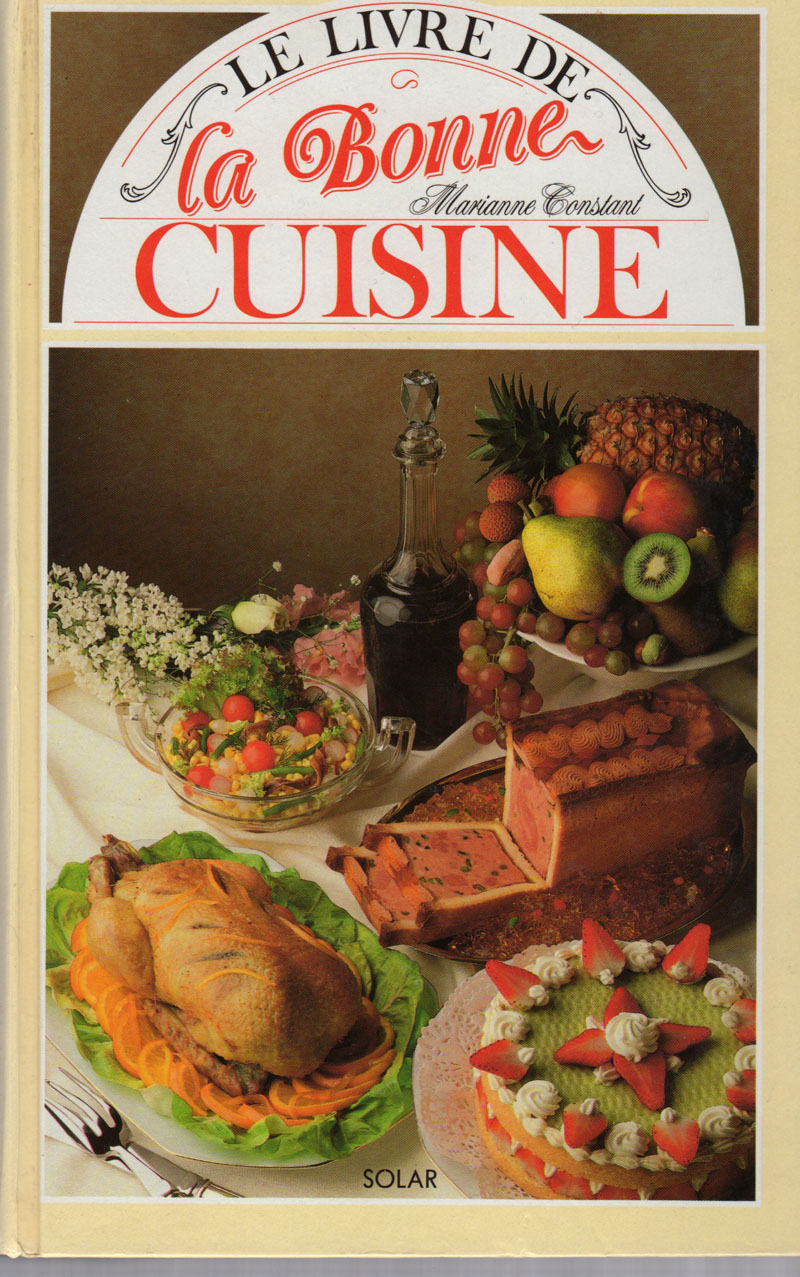If you buy something at the mall, it’s only half a thrill — the thrill of acquisition. If you buy something at a second-hand shop, it’s the full thrill — the thrill of acquisition plus the thrill of the hunt. Because you never know what you’re going to find at a second-hand shop. This week, for $5, I found a classic French cookbook.
I have very few cookbooks anymore. Specialized cookbooks (for example, Beard on Bread), sat on the shelf and were never consulted. There’s only one kind of cookbook that I find truly useful — a complete, encyclopedic cookbook. That’s why the 1943 wartime edition of The Joy of Cooking is my favorite cookbook, used regularly. I may page through it looking for inspiration. Or maybe I have too many eggs on my hands, and I’m trying to think of something new to do with them. Or maybe I want something chocolate, but I’m not sure what.
Though for years I subscribed to Gourmet magazine, I’ve never really been a student of French cooking. I have, however, been a student of the French language, and I read French fluently, though I never claim to speak it. So I was thrilled to come across this copy of Le Livre de la Bonne Cuisine. It’s a classic in France, in many ways analogous to America’s The Joy of Cooking. It’s encyclopedic — 770 recipes, 668 pages, 1,200 photographs. Like The Joy of Cooking, it was largely aimed at diligent new housekeepers who wanted to upgrade their cooking. This is the 1989 edition. It assumes that you don’t know a great deal, so it covers lots of basics, things such as how to clean a chicken, how to slice uncommon vegetables, pastry techniques, what to do with a lobster, or how to filet a fish.
I don’t do a lot of cooking in the summer — just enough to survive. But as soon as the air is cool, so that the heat of the kitchen is comforting rather than oppressive, I cook. This fall and winter, I plan to work on my French cooking skills.
I need to get a kitchen scale, though, and metric measuring vessels. Though French recipes use tablespoons and teaspoons as a measure, liquid ingredients are given in metric measures, and many ingredients, including butter, sugar, and flour, must be weighed. Williams-Sonoma, here I come, for a little mall shopping.



